Startups in Numbers: Startups Statistics

Do you know the percentage of startups that fail? How about the percentage of startups that succeed? What country has the most startups? What industry puts forward the highest number of startups?
Answering these questions is possible with evidence and numbers. Knowing more about a startup gives a greater perception of why these companies grow and later become unicorns. Besides, essential startup statistics provide a vision of the challenges a startup faces, namely because the failure rate for these small companies is high, as we will show further. So, let’s explore some key startup statistics to get an evidence-based angle on the startup phenomenon.
Startup Statistics per County and Geographical Data
The first stop is all about country-based startup statistics. This data helps understand which countries have the most startups and which serves as a rapidly growing hub for this phenomenon.
- The United States is considered the country with the most startups. How many startups are there in the U.S.? While the number is continuously growing, more than 72,560 startups are now.
- Within the U.S., San Francisco Bay is the place with the highest ranking for startups. It means the city has the most favorable conditions for starting a company. New York and Los Angeles come in second and third places, respectively.
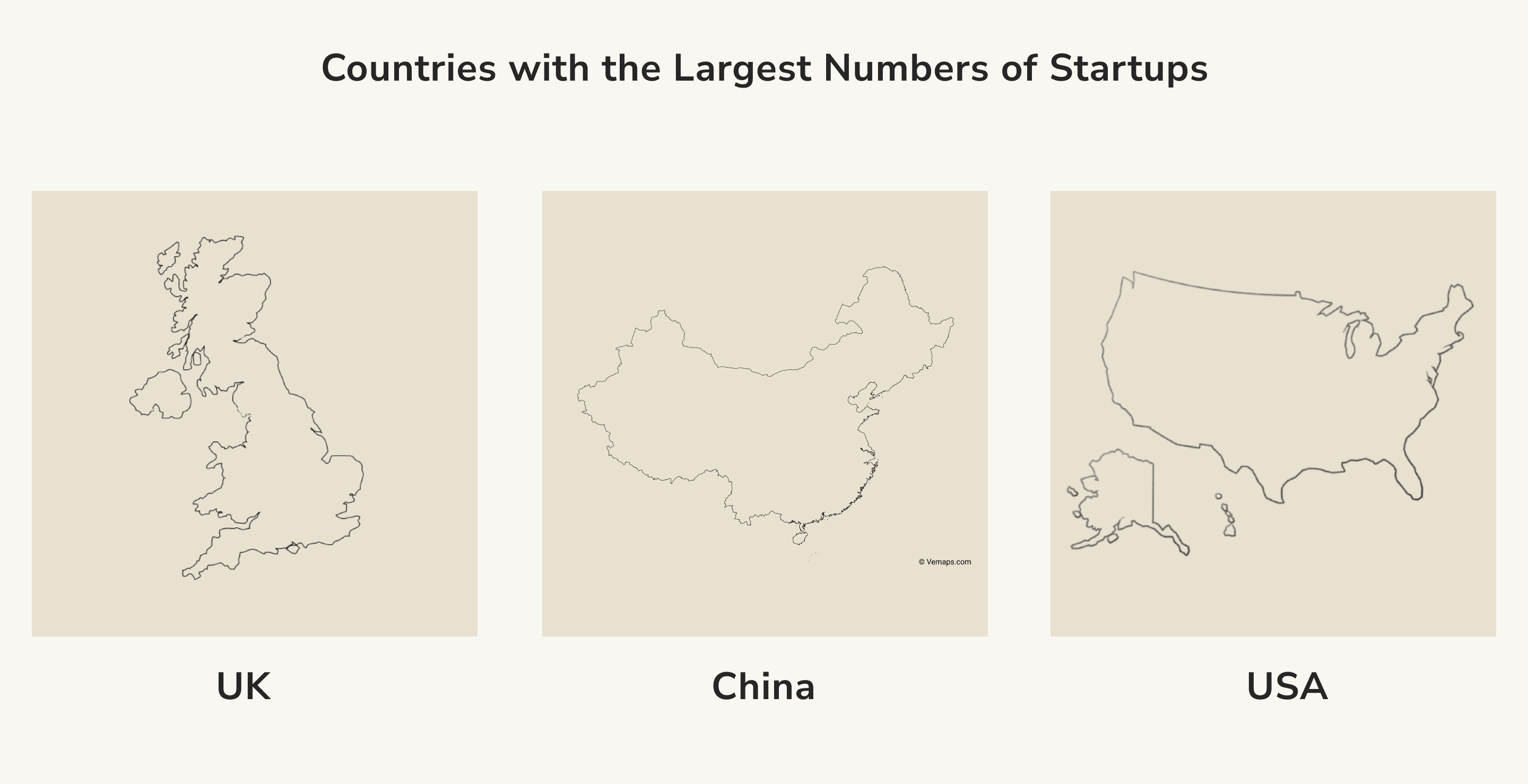
- As of November 2023, China has the second-largest number of startups, and the United Kingdom is third.
- In the EU, Germany is the country with the largest total startup output. However, Latvia is the nation with the most people actively involved in opening new startups. Interestingly, about 15% of all adult Latvians own a startup or are in the process of founding one. These startup statistics show Latvia is the place to seek startup-opening insights.
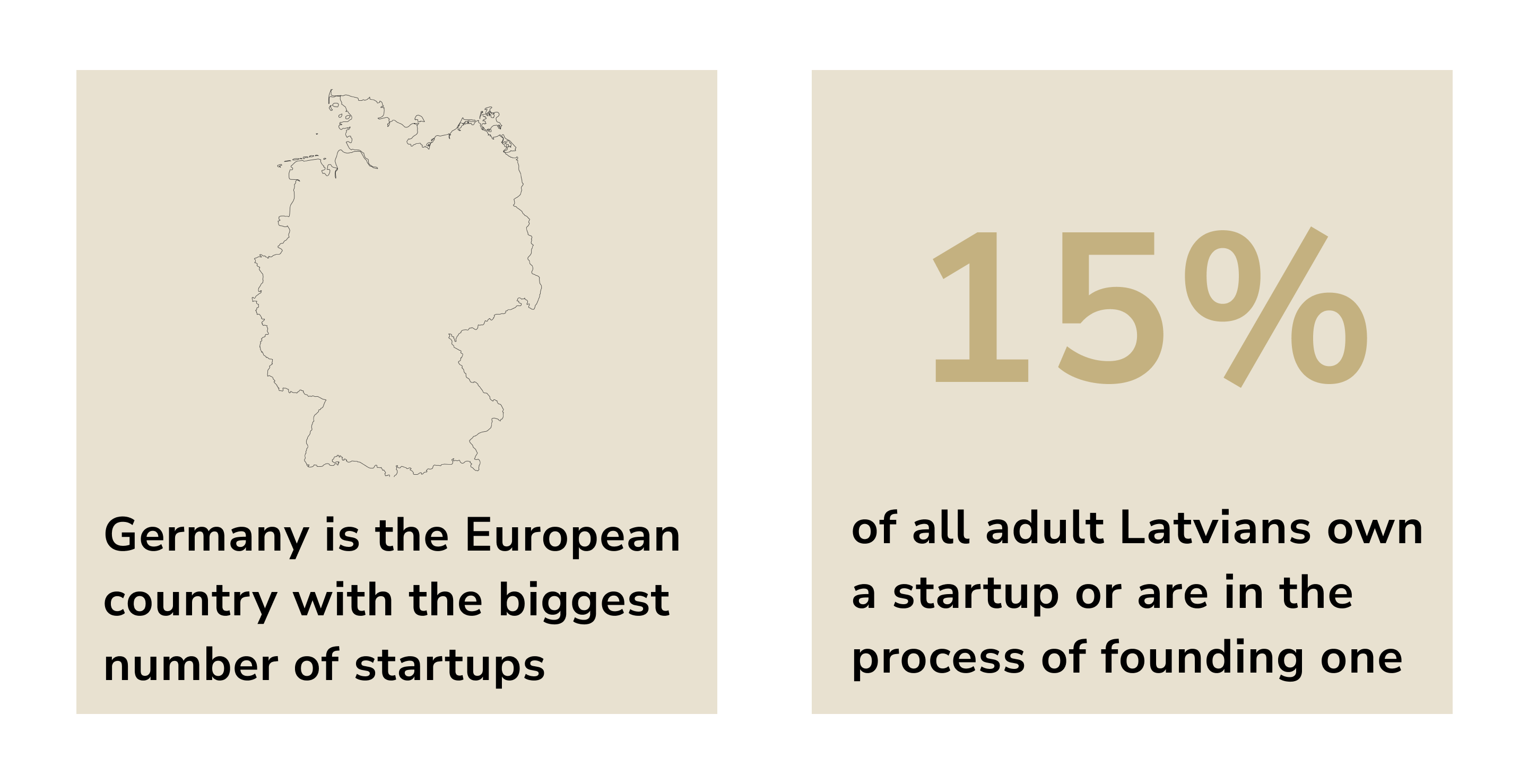
- By 2025, Asian startups focused on smart city technologies will project about 45% of the industry’s global revenue. Turning percentages into numbers shows that Asian startups will bring $50 billion by 2025 compared to the current worth of the industry presented at about $10 billion.
At this point, the startup statistics above show the U.S. to have the most startups in the world, with second and third places not even coming close. Yet, Asia presents itself as the location with fast-growing startups generating massive revenue. In turn, Europe and places like Latvia show entrepreneurs' statistics indicating the immense interest in startups among the adult population.
Startup Statistics per Industry
Now, let’s proceed to some industry-specific startup statistics.
- When it comes to unicorn startups, according to this source, if we look at the period of 2016-2023, 48% of these were in Informational Technology industry. Second and third places, with 18% and 12% respectively, are occupied by Consumer Products and Services and Business Products and Services.
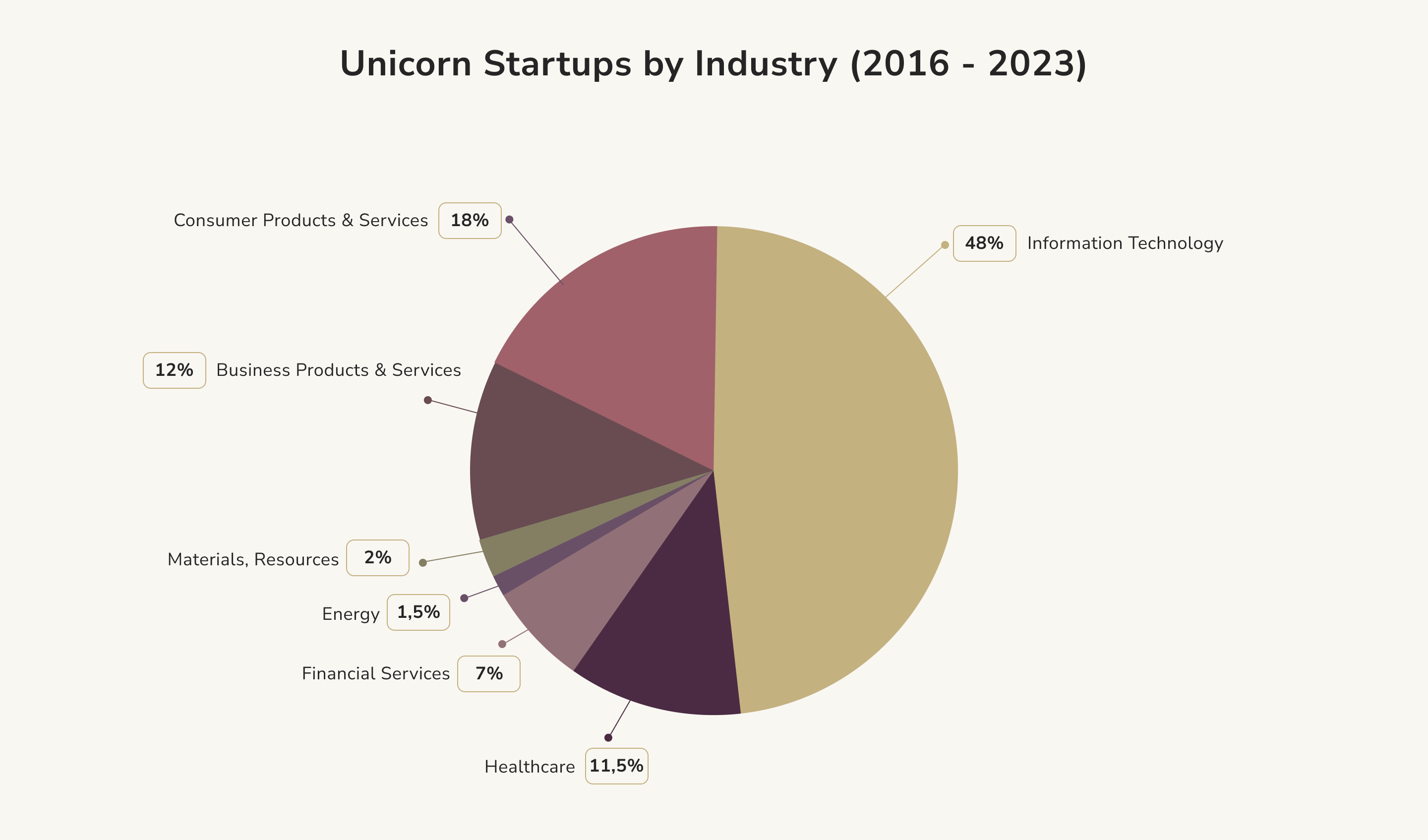
- Interestingly, regarding the Software-as-a-Service (SaaS) sector, only about 20% survive the first year. Another interesting statistics is that nearly 56% of independent Software-as-a-Service companies are founded by one person.
- In terms of startups working in Artificial Intelligence (AI), between 2021 and 2023 the funding increased by 66%.
- Finally, uncovering some key industry-specific startup statistics, you see that some top financially viable industries for startups are clean beauty, snack food, and security equipment. These generate $22 billion, $45.8 billion, and $3.2 billion, respectively.
These startup statistics point out technologies and communications being industries most startups are interested in. Besides, AI is the technology many startups find most appealing. Finally, when it comes to startups generating revenue, they cannot afford to overlook the beauty and snack food industries.
Investment and Funding Startup Statistics
Next, we will focus on startup statistics showing where the investments come from. Thes numbers will show how, where, and why startups get money to grow.
- First and foremost, Crunchbase indicates that early-stage funding for more than 8,000 totals about $210 billion annually. Besides, the number shows a distinct progression. While in the last quarter of 2020, startups at the early stage of their development raised $27 billion compared to $61 billion in the same quarter of 2021. As a result, investment in startups is booming.
- Regarding FinTech startups, although the funding of these plunged by 49% in the first half of 2023, startups that plan to utilise the power of the AI in the fintech service witnessed over 60 funding rounds totaling $1 billion.
- In addition, following the insights offered by Bloomberg, startups working with AI generated about $18 billion in investments by the third quarter of 2023 while the AI market is expected to reach $2 trillion by 2030.
- By November 2023, US digital health startups have raised $8.6 billion across 365 deals, and this again showed steady decline in the funding of this industry since the record total investments of $29 billion in 2021. And the general investments in the AI healthcare startups surges with this segment of the market expected to grow to an impressive $187 billion by 2031.
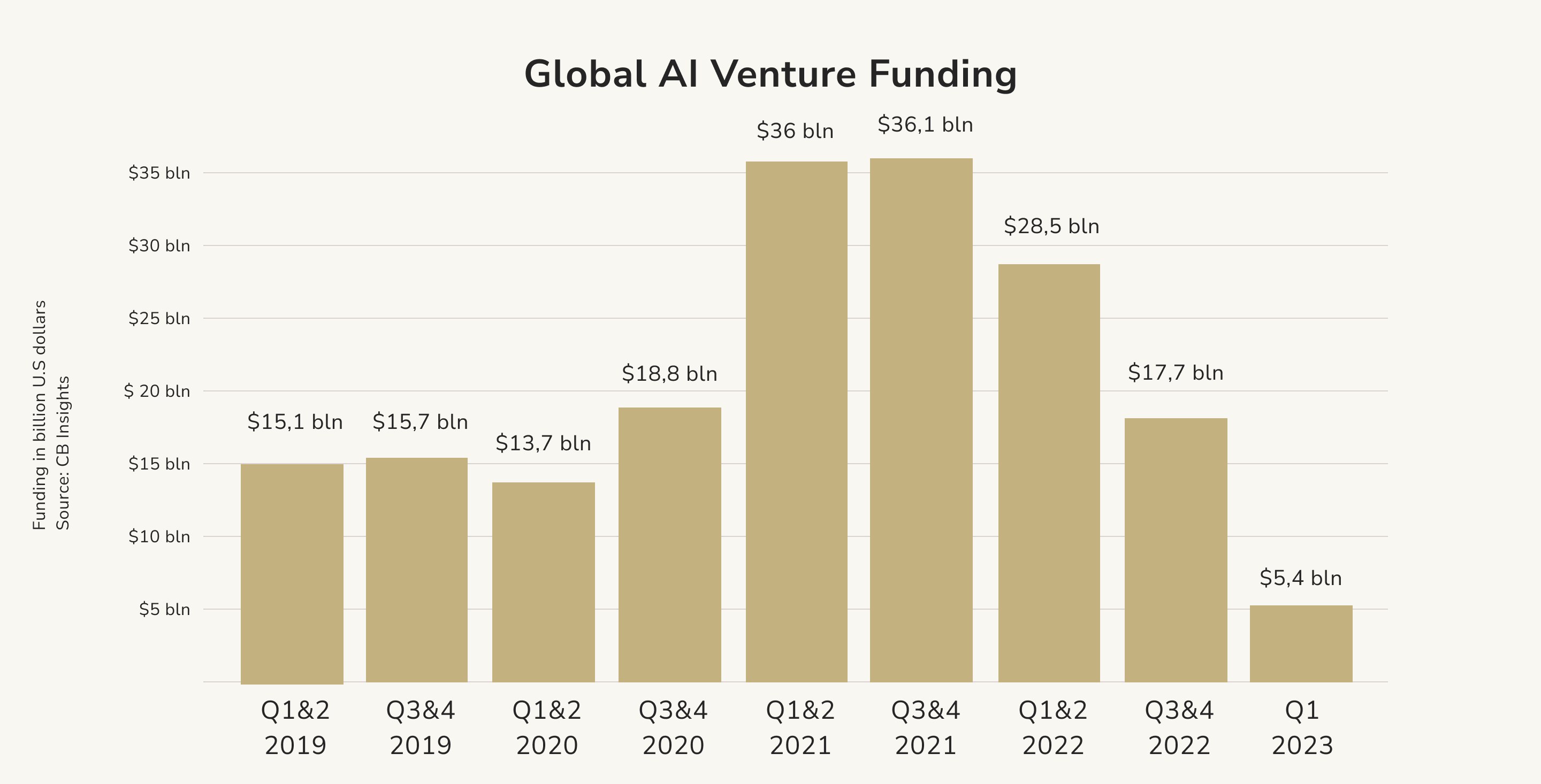
- When it comes to the side of the investors, more than 75% of startups backed by Venture Capitalists (VC) never return what was invested. Besides, less than 1% of startups on Kickstarter raise more than $1 million. In a nutshell, it means investing in startups is risky.
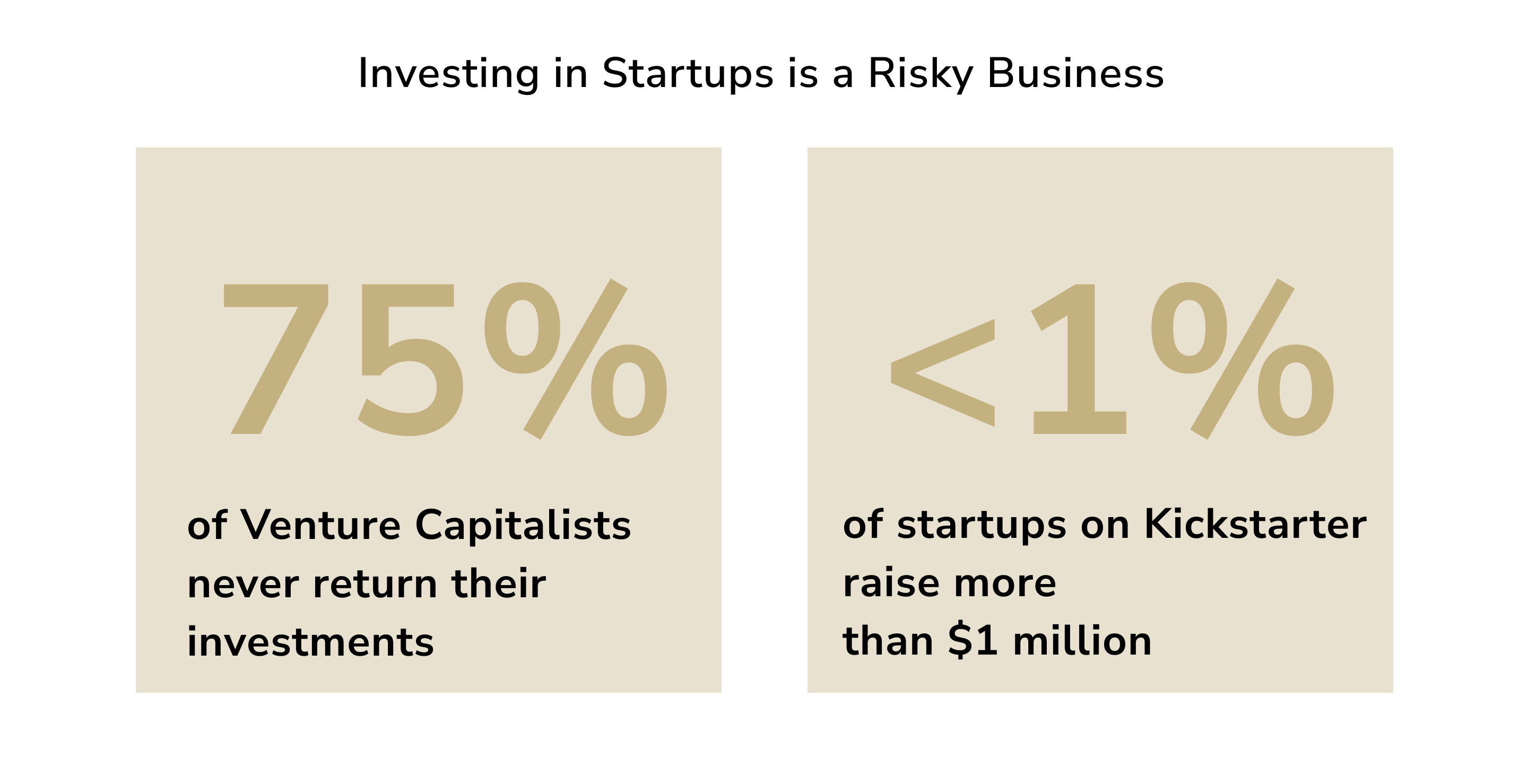
- So what are the highest-valued startups in the world by the end of 2023? According to Statista, those are ByteDance, SpaceX, Shein, Stripe, and Databricks.
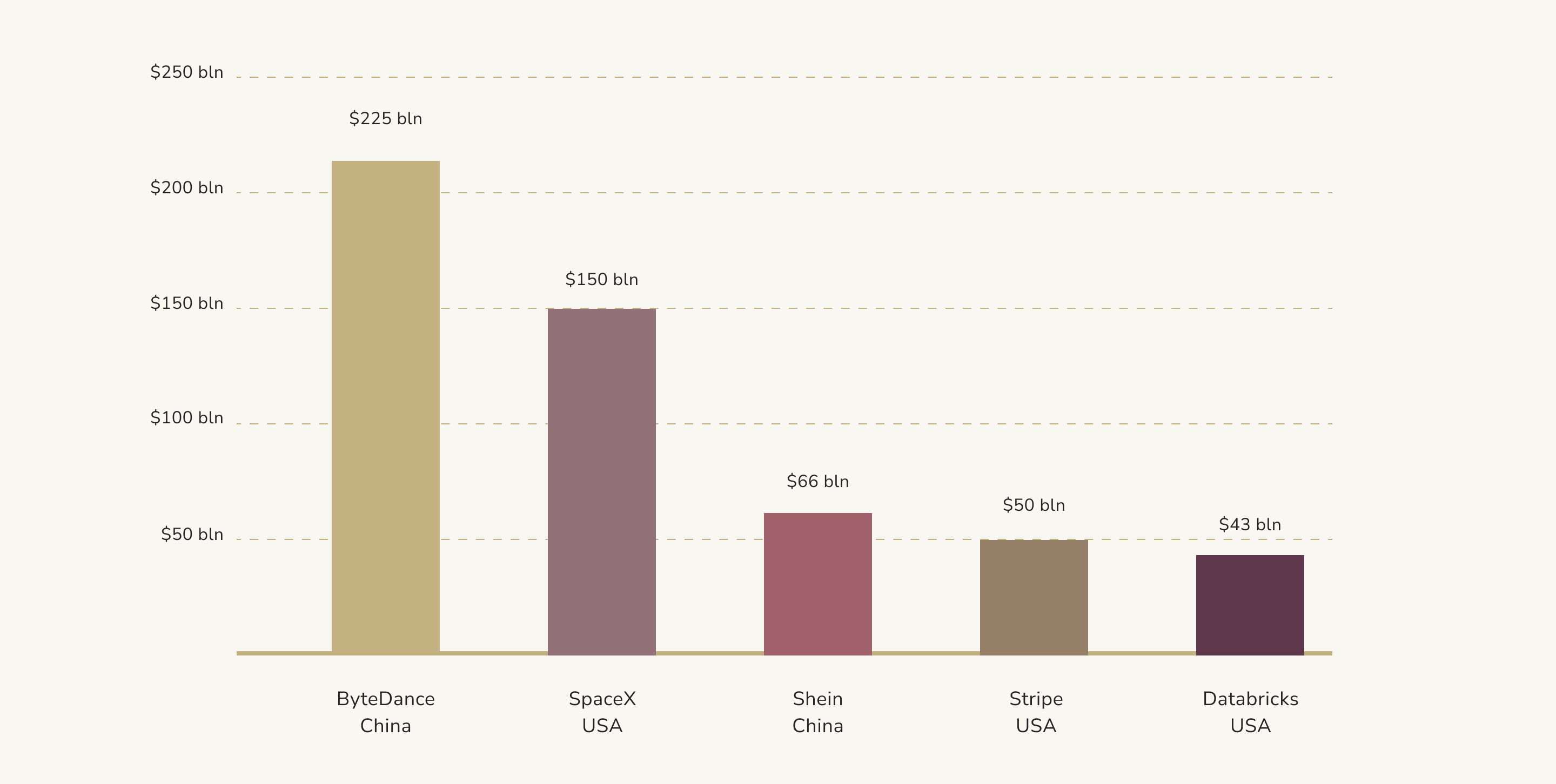
Keeping the insights above in mind, investing in startups generally is growing rapidly. Investment in AI-based startups appears to be the most promising. Finally, while this startup's statistics show the investment rate will continue to grow, funding a startup is still risky.
Startup Demographics and Team Stats
Pondering upon startup demographics, this startup statistics focuses on aspects like age groups, genders, ethnicities, education levels, and many more. Look at the demographics factor in technology facts and statistics linked to startups.
- One of the key Silicon Valley facts is that most startup founders graduated from Stanford University. Such companies as Google and Stubhub were founded by Stanford graduates. In total, more than 400 graduates from Stanford founded at least one startup.
- According to Harvard Business Review, the average age of a startup founder is 42. In such a case, envisioning startup founders in their twenties corresponds to an urban legend. Most startups are founded by experienced people in their forties.
- When it comes to performance, even though most startups are founded by people in their forties, the founding teams aged 25 or younger show a 30% better performance than other age groups.
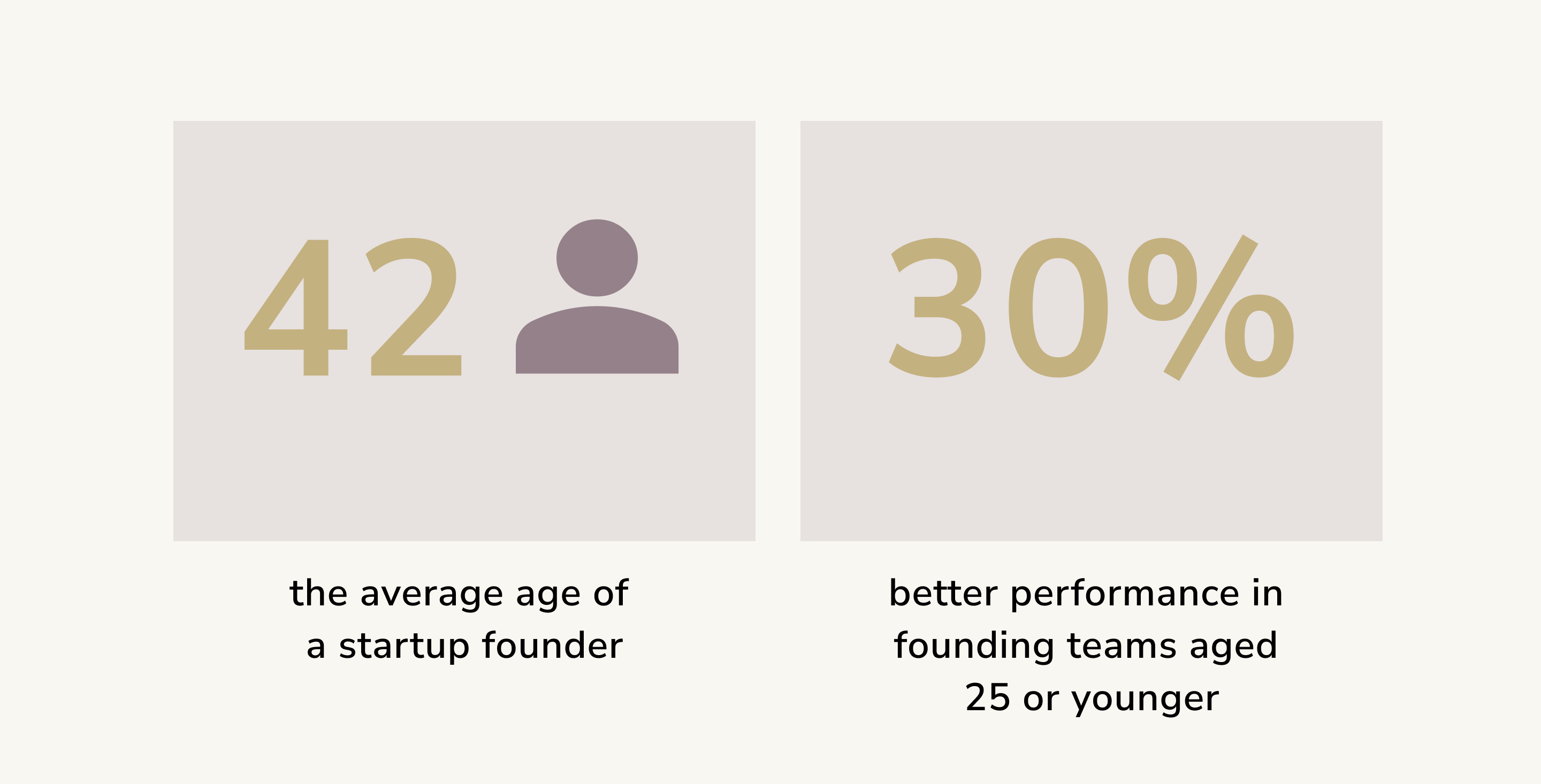
- What is more interesting, startups founded or co-founded by women have a 63% better performance with their VC investors. When ten years of data were analyzed, the researchers found that startups founded by females outperformed the companies founded by males. Moreover, the new information as of middle of 2023 shows that the number of new women-led businesses alone surged from 36% to 47%.
- Health, wellness, and medicine are top business sectors with female startup founders.
- Finally, only 5% of all startup founders are African American.
At this point, the startup statistics linked to demographics show most startup founders being in their forties while those in their twenties show greater performance. Besides, VC investors prefer funding startups founded by females because they have a greater success rate. Now, let’s take a look at some team-based startup statistics.
- Notably, about 99% of all companies in the United States have less than 500 employees, which puts them in the category of small businesses
- It takes a startup about six months to hire an employee
- Startup founders spend about 40% of their time on hiring, payroll, and termination tasks.
- Interesting startup stats show these companies are most likely to fail when they have less than 50 employees on board.
- About 23% of startup failure rate statistics relate to team problems.
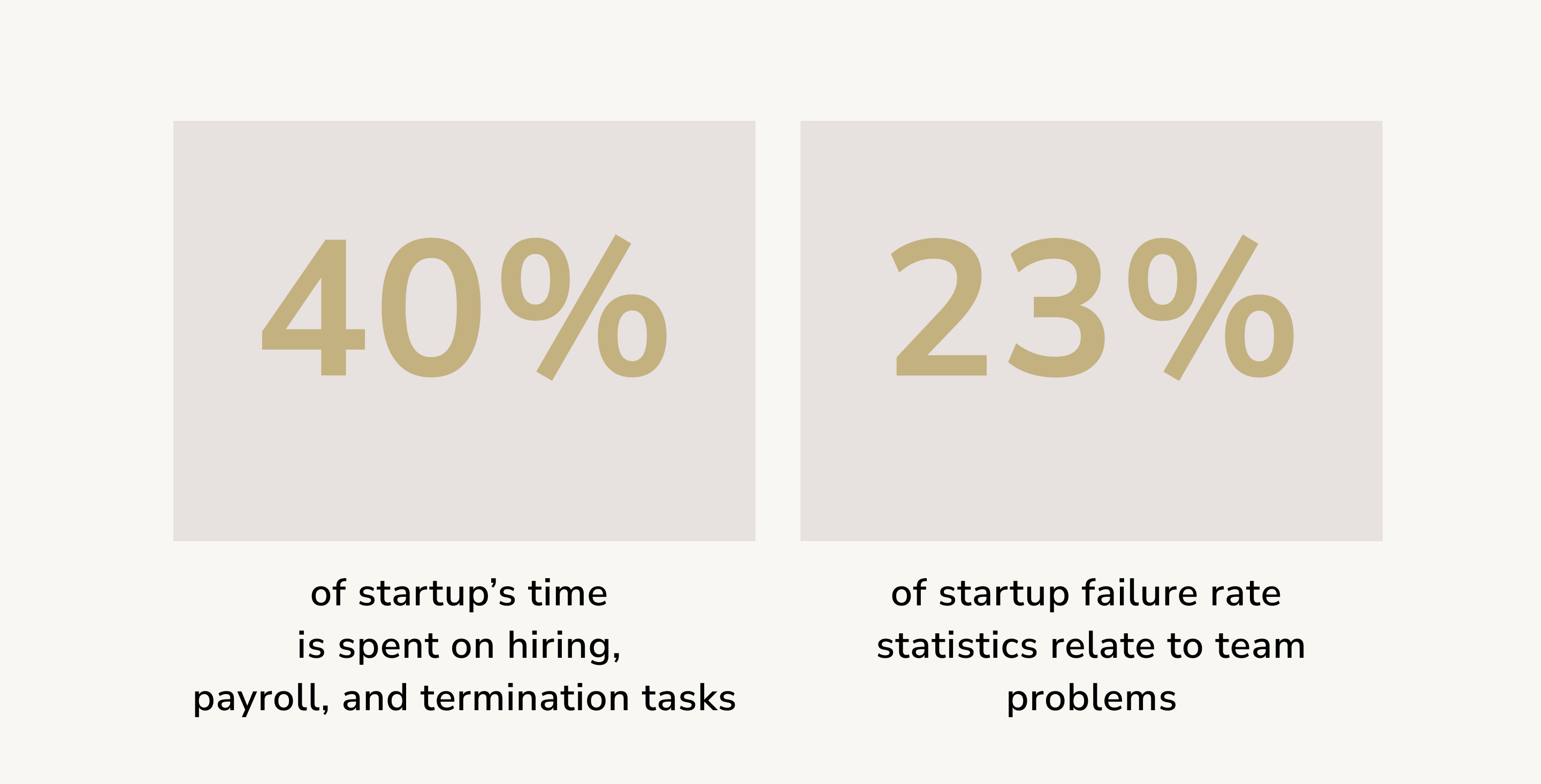
Overall, the team statistics suggest most companies in the United States are small. In addition, when running a startup, you must be prepared to spend almost half of your time on HR-related tasks. Finally, if you run a startup with less than 50 employees and experience team issues, those can indicate your business will fail soon.
Startups Success Rates
Next, we will cover startup trends linked to success statistics. As we have seen previously, the startup failure rate can be high, which means the success of startups depends on various factors that need to be accounted for. Without further ado, let’s explore some successful statistics showing why and how startups might survive.
- The next interesting startup success statistic is that people who previously ran a successful startup have a 30% chance of running a new one. Essentially, it shows that having experience running a company is vital for a startup's success.
- When it comes to successful startup business statistics, Inc. reports the startups operating within the U.S. healthcare industry appear to be the strongest on the market. They bring about $36 billion in revenue.
All piece together, the success rate of startups directly depends on a founder’s experience of running a company, the instruments you choices to get revenue, and the industry your business operates.
Why Startups Fail and Startup Failure Rates
After speaking about all the industries, demographics, team stats, and success rates, it is time to address the elephant in the room - how many startups fail and why they fail.
- One of the most daunting statistics showing what percentage of startups fail originates from the National Business Capital and Services Census. It indicates that around 90% of startups fail. Essentially, nine will stare into the abyss from ten companies on the market. At this point, considering that the startup market is booming, it means regardless of thousands of them failing, the ones that survive have a great chance to shine.
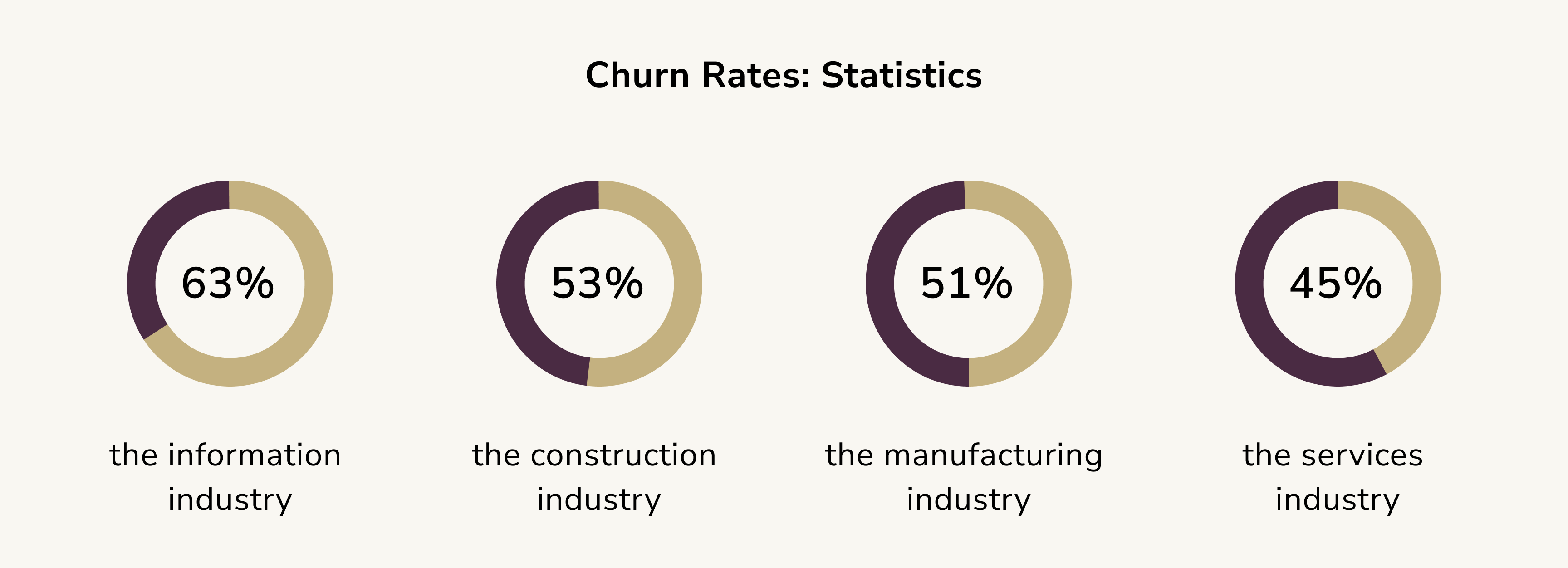
- One should mention several sectors when it comes to industries with the highest rate of failing startups. The information industry presents a staggering 63% failure rate of startups. The construction industry comes in second with about a 53% startup failure rate. Then comes manufacturing with 51% and services with 45%. These numbers suggest the industries above are the toughest to penetrate.
- Pondering on famously failed startups, LeSports is the one to mention. In a nutshell, considering the amount of investment it attracted, it was one of the most expensive startups to fail. In short, it cost investors a whopping $1.7 billion. Other famous failed startups are Jawbone, Aereo, and Solyndra.
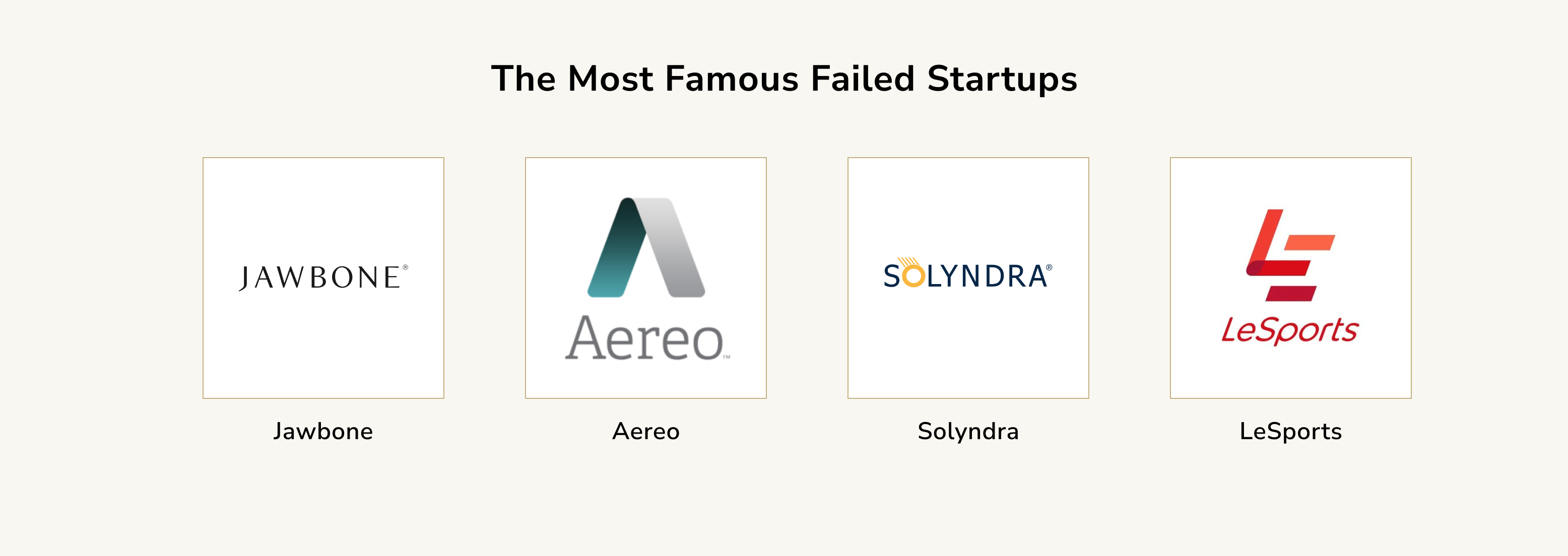
- Another important startup failure statistic is linked to the time of their lifespan that companies fail. Essentially, almost 40% of all failing startups face demise during the first two years of their life.
- Finally, while speaking about why startups fail, the primary reasons are the following: product-market unfitness, marketing issues, team problems, finance issues, and tech failures.
The startup statistics above suggest that most new companies will not see the light of day after their inception. Most likely, these will fail during the first two years of their existence. Besides, if you are planning to find a startup in the information, construction, or manufacturing industry, think twice. On a high note, though most startups fail, there is still a chance you can become a unicorn everyone will recognize.
Conclusion
It is important to understand that startup statistics are not based on speculations, opinions, or assumptions. It is based on evidence-based research and facts. These facts show that new startups will emerge, and most will fail. However, the ones that survive have a good chance of becoming the great ones.
The statistics above show that before plunging into starting a new business, you need to be fully prepared. It entails having experience running a company, knowing the industry’s ins and outs, knowing where to get investment, and understanding that failure is just another chance to get valuable insights and improve your chances for success next time.
If you are sure that your idea is destined to succeed, contact Impressit, and we will begin to turn your dream into reality right away!

Roman Zomko
Other articles